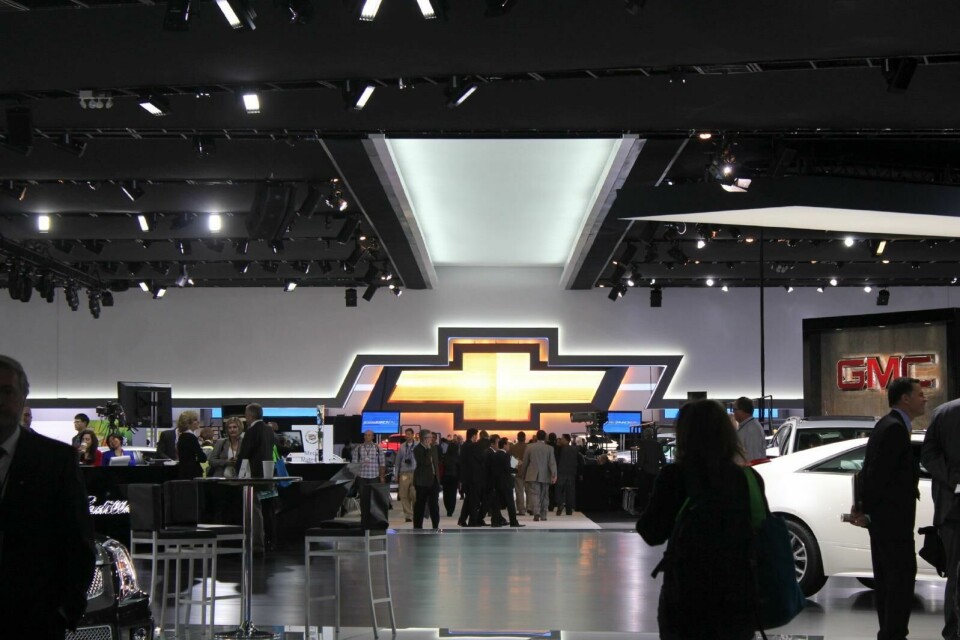
Design Review: Detroit Show Stands
Car Design News first looked in detail at the influence of pavilions and manufacturer stands at the Frankfurt Motor Show last year and how the industry, in general, has been quite slow capitalize on this potentially massive means of communication










Car Design News first looked in detail at the influence of pavilions and manufacturer stands at the Frankfurt Motor Show last year and how the industry, in general, has been quite slow capitalize on this potentially massive means of communication. Last month’s North American International Auto Show was evidence that most manufacturers have begun to tap this potential, with many integrating consumer technology, such as tablets and interactive displays into their booths.
Almost every booth also incorporated social media, with QR codes adorning vehicle kiosks and the ability to send photographs and messages via Twitter, Facebook, and Foursquare. Several of the displays even featured video games such as Forza 4 that allowed users to test out the new cars on world-famous tracks.




In terms of aesthetics, the use of giant, white, undulating surfaces and ribbons was evident throughout the halls of the COBO Center. The Audi, Infiniti and BMW stands, as well as Volkswagen’s impossibly bright combination of stretched white walls and lighting were prime examples. Their message is clearly one of purity and cleanliness, as more hybrids and electric vehicles are introduced.
If there was one thing to be said about the US OEMs it’s that they pushed each of their brands with as much veracity as possible. This year logos and banners were larger than ever, often taking up entire wall designs. General Motors chose the Chevrolet logo as the centerpiece of its experience, as the bow-tie emblem served as a giant archway leading visitors to the central, concept-filled stage that defined their (possible) future. Again, giant white ribbons wrapped around each of the company’s marques, seemingly to hold them together as their products become increasingly independent.
Chrysler/Fiat chose the event to once again host a huge display, built on several levels and stages, representing its return to its status as a crucial part of the automotive industry. The company displayed new products from almost all its brands - from its Italian Fiat and Maserati families to its American Dodge, Chrysler, and Jeep brands. Additionally, the company’s MOPAR and SRT sub-brands had large areas of the booth devoted to them.
Ford also included large, sweeping surfaces in its display walls, as well as a circular ride in the center that would spiral up into what was being called ‘The Cloud’: a video-filled 360-degree display detailing Ford’s upcoming innovations as it attempts to reposition itself from an automotive company to a technology company.
Sister company, Lincoln had arguably the most impressive stand, however, with beautiful lattice screens and a pair of expanding and contracting hanging sphere sculptures either side of the stairs. The work of Chuck Hoberman, the aluminum and steel structures are actuated by a single servo motor and expand from 4.5 ft to 15 ft in less than three seconds, controlled by computer and sequenced to fit in with the sound and music of the stand.
Nissan incorporated large hanging square LED displays that counted down like a space shuttle launch until the next scheduled product presentation. Toyota chose a clean, traditional display with vertical banners to guide visitors. In VW’s case, the placement of a giant ‘Car of the Year’ award in the center of its booth signified not only the popularity of the new Passat, but also the company’s drive to become the number one carmaker in the world. A light track along the floor and ceiling of BMW’s booth served to lead eyes to its new 3 Series, racing about the display like an escapee from Tron. Meanwhile, Mazda’s new design language was quite literally framed and displayed by giant colored cubes in its booth, with the new 2013 CX-5 on a pedestal at the center.
Some of the smaller booths were more adventurous in their design, speaking to specific markets or ideologies. VIA utilized touchable lightning posts and soft globes overhead to point out its push for powerful all-electric vehicles. Coda’s environmentally-friendly focus was carried over into its stand with the extensive use of wood and bamboo, with living plants and brushed aluminum serving as accents. Mini’s wall-mounted twisting track advertised the company as fun and quirky.
Despite the varying degrees of success, it’s clear that show stand design is now a major method of communication, a trend that’s sure to continue.



